Spazio: ultima frontiera. Credere che si sia soli nell'universo è come credere che la Terra sia piatta. Come disse l'astrofisico Labeque al palazzo dell'UNESCO, durante il congresso mondiale del SETI di Parigi del Settembre 2008, " SOMETHING IS HERE", "Qualcosa è qui", e I TEMPI SONO MATURI per farsene una ragione. La CIA, l'FBI, la NSA, il Pentagono, e non solo, lo hanno confermato!
Statistiche
Tuesday, August 31, 2021
Pentagon Document Tells How to Answer Questions About “Extraterrestrial Technology” ( Futurism )

Here’s exactly what’s in it.
Talking Points
The Department of Defense (DOD) has released a document of talking points for how government officials should respond to questions about UFOs.
The document — known as a “briefing card” — was obtained via a Freedom of Information Act (FOIA) request by The Black Vault, an online database of declassified government documents. The briefing card itself is filled with messaging and talking points to help public affairs officials navigate tricky questions such as “Has the Department found any evidence of extraterrestrial technology?” and “Why can’t you tell us anything about UAPs or what the [UAP Task Force] is doing?”
You can check out the entire three-page memo below:
The Department of Defense released a "briefing card" regarding UFOs and UAPs. This is a list of talking points to help government personnel answer questions about "extraterrestrial technology" and aliens.
Credit to @blackvaultcom for this and the excellent #FOIA work as always. pic.twitter.com/TecKIkSTgY
— Tony Ho Tran (@TonyHoWasHere) August 28, 2021
Top Line Messages
The Office of the Secretary of Defense’s public affairs received the card on May 17, in anticipation of the (frankly disappointing) UFO report to Congress that came out the next month. It shows that the Pentagon was — at the very least — keenly aware of public interest in the report and the government’s knowledge of UFOs in general.
There’s not a whole lot of new information to be gleaned from the document as it sticks to what we’ve already heard from the Pentagon in the past regarding UFOs. However, the fact that they created the briefing card at all is a testament to how much they wanted to control the messaging surrounding the topic.
Tony Tran
READ MORE: Department of Defense “Briefing Card” On Unidentified Aerial Phenomena [The Black Vault]
More on the UFO report: The Pentagon Just Released Its UFO Report
The Extraterrestrial Hypothesis: In the Debate Over UAP Origins, Scientists Wrestle With Possibilities… and Biases ( The Debrief )
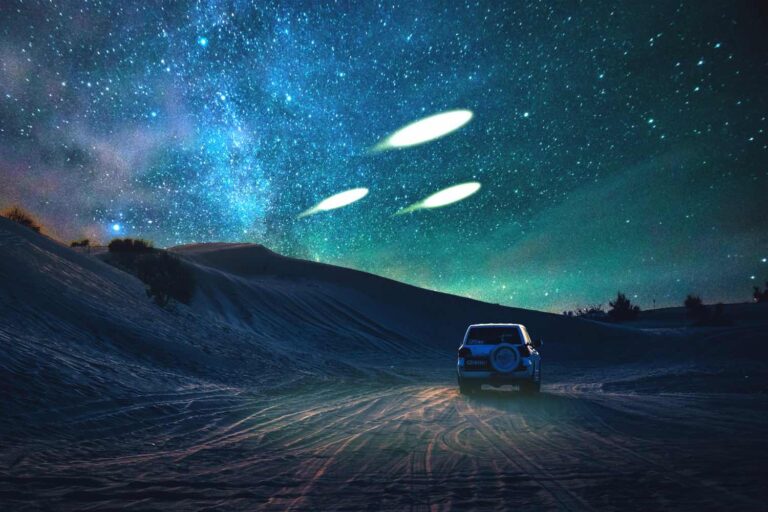
As UFO interest reaches unprecedented heights, a favored theory about their origin presents new challenges for scientists.
Few would dispute the fact that UFOs have undergone a renascence in public interest in recent years. According to recent data, it also appears that more Americans now seem willing to entertain the possibility that these aerial mysteries could represent a phenomenon unrecognized by science.
A recent Gallup survey found that while half of Americans remain skeptical about UFO sightings, that number has dropped ten points since 2019, when similar surveys found that 60% of Americans had reservations about the idea that UFOs could have anything other than earthly explanations.
One thing the new Gallup data seems to convey is the impact recent U.S. government involvement in the longstanding UFO question has had on public opinion. The presence of unidentified aerial phenomena, or UAP as the military prefers to call them, were seemingly confirmed with the release of a nine-page preliminary assessment in June by the Navy’s UAP Task Force (UAPTF), which reported 144 cases involving objects of unknown origin observed by military pilots and others that currently remain unexplained.
Most of these incidents were collected following the institution of a formalized reporting mechanism by the Navy in 2019, the same year previous Gallup surveys found more than half of Americans remained skeptical about possible extraterrestrial origins of such objects. In late 2020, the U.S. Air Force followed suit, with the combined Navy and Air Force data constituting the majority of the reports discussed within the Task Force’s assessment delivered to the Office of the Director of National Intelligence (ODNI) at the end of June.
According to the report, additional information is also being provided by several other agencies, including the FAA, who in recent days confirmed in a statement provided to The Debrief its own role in documenting UAP incidents that can be corroborated with radar or other data on behalf of the UAPTF. Notably, the inclusion of data from the FAA would seemingly indicate that some incident reports from civilian pilots are also among the 144 incidents the UAPTF has currently examined.
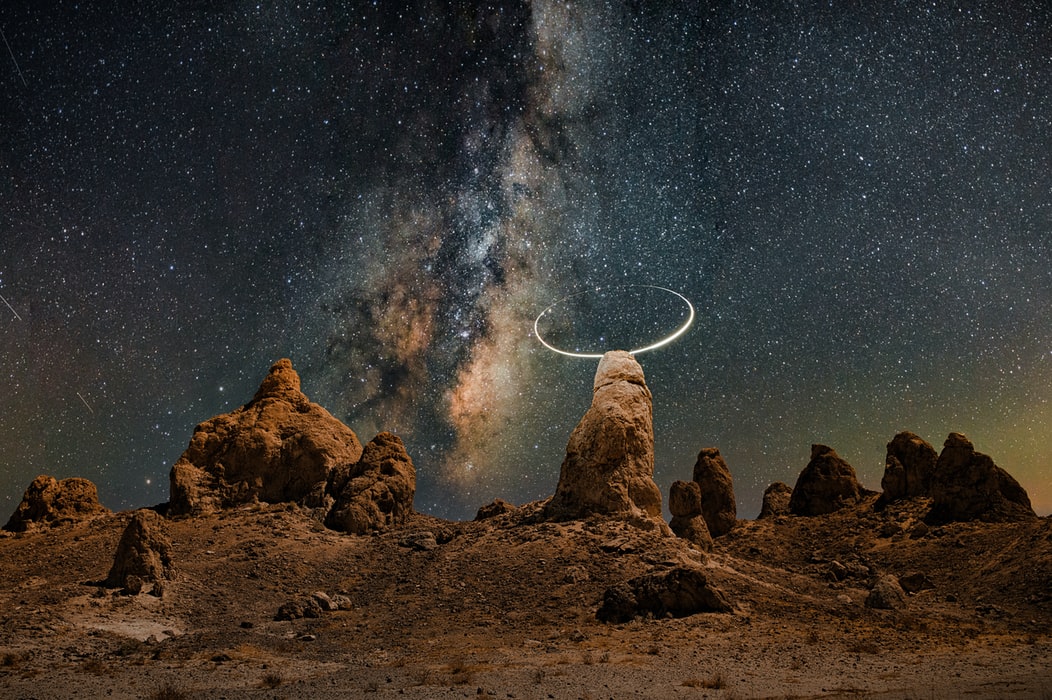
In the days since the report’s delivery to the ODNI, several news outlets have tried to reign in on the subject’s current widespread appeal. Just days after the delivery of the UAPTF’s preliminary assessment, the New York Post Editorial Board called out most of the recent UFO “news” in advance of the report as clickbait, aimed at cashing in on widespread interest in the subject, rather than contributing anything meaningful to the ongoing discussion.
“Yes, UFOs and ‘little green men’ are fun and have inspired tons of entertaining fiction,” the Post editorial read. “But the US intelligence community was entirely right to dump all over the conspiracy theories and ‘They’re really out there’ nonsense in its report on sightings of unidentified aerial phenomena (UAP).” Although the Post Editorial Board noted that extraterrestrial sources were not specifically ruled out in the June report, “it also provides zero evidence supporting alien theories.”
More recently, The Guardian noted that people’s current UFO fascination is primarily “rooted in hope,” while elsewhere The Washington Post Magazine argued what it labels the current “UFO mania” simply has to end.
As the recent Gallup data helps show, it’s no wonder UFOs have been on the minds of so many Americans lately. Thanks in large part to the anticipation ahead of the UAPTF report’s delivery to the ODNI, during the first half of 2021 UFOs have seen more consistent, serious media attention than they have in decades. As a byproduct of this, the New York Post correctly notes that many outlets appear to have jumped on the UFO bandwagon in order to claim their share of traffic from all the attention the subject has received. It is a trend that has been slowly building since late 2017, following a New York Times article revealing the existence of the Pentagon’s Advanced Aerospace Threat Identification Program (AATIP), which analyzed aerial phenomena that might pose a challenge to national security.
However, there is something else the recent Gallup data reveals about people’s attitudes toward UFOs. Since 2019, Americans appear not only to have softened their skepticism toward the subject, but also appear more willing to accept the idea that the phenomenon might represent evidence of extraterrestrial technology. In the recent survey, 41% of adults in America now also associate their belief in UFOs with extraterrestrial spacecraft, representing an eight-point rise from 2019 when similar surveys found just 33% of Americans held such views.
And some scientists think this could represent a problem going forward.
Micah Hanks
ALEX DIETRICH: “El encuentro con el OVNI Tic-Tac fue una montaña rusa emocional”, lo dijo en La Señal ( LA SENAL )

"Fue una montaña rusa emocional. Inicialmente estaba entusiasmada, le pregunté a mi superior que estaba en el asiento de atrás acerca de qué pensaba que sería aquello y me dijo que no sabía; que quizás sería un contrabandista de drogas llegando desde la costa de México".
Alex Dietrich, la piloto de uno de los F/A-18F Super Hornet que se encontraron con el famoso OVNI Tic-Tac en noviembre de 2004, dijo que el encuentro fue una montaña rusa emocional, en medio de una entrevista exclusiva en nuestro canal en YouTube.
“Fue una montaña rusa emocional. Inicialmente estaba entusiasmada, le pregunté a mi superior que estaba en el asiento de atrás acerca de qué pensaba que sería aquello y me dijo que no sabía; que quizás sería un contrabandista de drogas llegando desde la costa de México”.
Así comenzó el encuentro del 14 de noviembre de 2004, mientras se hallaban realizando entrenamientos de combate frente a las costas del sur de California con el portaaviones USS Nimitz.
“A veces los narcos vuelan en avionetas Cessna, tratando de pasar por debajo de nuestros radares, así que pensé «¡Oh! Ok, vamos a atrapar a unos chicos malos». Pero luego, cuando vimos el agua moviéndose mi corazón se detuvo, porque pensé que quien fuera que estábamos persiguiendo acababa de estrellarse y se hundía. Pero luego, casi tan rápido como pensé en eso el Tic-Tac apareció allí. Así que pasé a estar shockeada, extrañada, y luego, cuando este aparato daba vueltas con David Fravor (piloto Top Gun), estaba preocupada y me sentía vulnerable porque no llevábamos armamento; estábamos indefensos”.

Alex Dietrich recuerda el momento, ocurrido hace 17 años, y dice que pasó por todas las emociones en un instante. Puedes ver la entrevista completa en el programa aquí debajo:
De todos modos, la piloto dice que si bien esto sucedió hace muchos
años, no pensó mucho más en el tema hasta este verano boreal, cuando se
realizó el informe OVNI del Pentágono, por medio de la UAPTF, al
congreso de los Estados Unidos. Así y todo, dice estar enfocada en el
día a día, lo que incluye la retirada de las tropas estadounidenses de
Afganistán y la evacuación de los afganos que colaboraron con los
americanos en los 20 años de presencia en el país asiático.
“Escuché muchas teorías desde que me han traído, sin querer, a este mundo de la ufología. Personalmente no suscribo ninguna de estas hipótesis, no estoy motivada por ninguna y ciertamente no estoy calificada para realizar análisis alguno. Sabes, tengo muchas cosas en mi vida y con mi carrera como hoy, que estoy muy preocupada por mis amigos afganos, a los que considero mi familia, ya que fui desplegada en tierra en Afganistán en 2010 y me mantuve allí por un año”.
Alex Dietrich dio muchos detalles sobre el encuentro y los interrogatorios de Inteligencia Naval y el ATTIP, incluyendo las fechas del primer contacto con Luis Elzondo, lo que trae respuestas y preguntas respecto al accionar del agente dentro del Pentágono. Pero eso, lo analizaremos en el próximo artículo.
Superstar RPI scientists talk about extraterrestrial life and God ( Times Union )


James Hendler Heidi Jo Newberg
This summer, the Office of U.S. National Intelligence gave Congress its report on Unidentified Aerial Phenomena—UAPs, aka UFOs. The report said no rational or scientific explanation could be found for 143 UAPs. Oh, and UAPs “clearly pose a safety of flight issue and may pose a challenge to U.S. national security.” Not very lofty conclusions. The report conceded that there was no standardized mechanism for UFO reporting until 2019 so data is skimpy.
But that can change as scientists continue to explore
space. Next year, NASA’s JUpiter ICy moons Explorer or JUICE heads
toward Jupiter’s moons.
Many of the scientists helping America explore the heavens embrace religious faith. Science and religion needn’t be adversarial. Asked in a 2015 Paris Match interview about the possibility of life on newly discovered planet Kepler-452b, Pope Francis said it’s hard to imagine extraterrestrials because our knowledge is limited. "Until America was discovered we thought it didn't exist,” Francis said. “We should stick to what the scientists tell us, still aware that the Creator is infinitely greater than our knowledge."
Meet Heidi Jo Newberg and James Hendler, two Rensselaer Polytechnic Institute scientists with stellar reputations worldwide who both embrace religious belief. They graciously agreed to discuss how discovery of life on other worlds might shape their faiths.
Astrophysicist and Physics Professor Heidi Jo Newberg
(Sloan Digital Sky Survey team 1992-02, currently working on a giant telescope designed to unfold in outer space)Q: What’s a normal day of research like for you?
I’m an
astrophysicist who studies the Milky Way galaxy. I use a telescope and
examine images from telescopes but not in the way people imagine.
No
astronomers today work by putting their eye up to a telescope to look
through it. You would have to go back about 100 years to find
astronomers who work that way. … Most of my career, I’ve worked without
physically going to a telescope. ... I can apply for observation time at
an observatory (anywhere on Earth) with a telescope that’s positioned
where I need it to be, that has the right equipment. I give the team
there the coordinates so they can point it to the object I want to
observe. They record the observations for me.
Alternatively, I can observe in real time on a computer screen from my office at RPI. I can control the telescope remotely, and then download the images taken on another part of the globe.
As a graduate student, I studied supernovas, exploding stars that can be as bright as a whole galaxy. After finishing my Ph.D., I had the great opportunity of being among the 100 scientists all over the world who were part of the Sloan Digital Sky Survey, which examined a quarter of the whole sky observable in every direction from the Earth. The technology allowed us to make 3D maps of the universe and capture multicolor images.
I now use normal stars to study the structure of the Milky Way, our galaxy. For example, I study the way dwarf galaxies falling into the Milky Way are ripped apart and incorporated into our galaxy.
2). How did you figure out you wanted to be an astronomer? Were you a sci fi fan inspired by NASA?
No, I wasn’t one of those kids who could quote "Star Trek" or "Doctor Who". But early on, I knew that I liked figuring things out. I always loved puzzles, brain teasers, and optical illusions. How our galaxy gobbles up dwarf galaxies, the nature of dark energy, those are great puzzles. Now, I’m working on a project that is a different sort of a puzzle---how to create a telescope that unfolds in outer space to look at spectra of planets that orbit nearby stars.
3). If somewhere out there, one day in the future,
life was documented on another world, how would it influence your
religious belief?
I was not raised in a church tradition as a child. But now I’m on the board of my Unitarian Universalist church. UUs believe that religion is a quest. The discovery of life, of beings who are self-aware and aware of the universe around them, on another world doesn’t contradict my faith. I don’t have a scripture that tells me whether life is confined to Earth. For me, religion helps us address questions science can’t answer. Does my life have any meaning? Do I have a soul, and if so what happens to it when I die? What is the source of that sense of connectedness that I have with people, nature, the Universe, that some call God, grace, or the "Spirit of Life?"
Q: Are there specific emotions a life form needs to connect spiritually to a higher power? For example, a study recently concluded dogs’ brain structure allows them to feel love, fear and anger. They don’t experience shame.
Well, neither do children. They learn shame. If life exists in another world, we don’t know if it will be a carbon-based form like us. We don’t know whether that life form will experience emotions like ours.
Tetherless World Professor of Computer, Web & Cognitive Sciences James Hendler
(former
scientific adviser to the U.S. Air Force, Rensselaer Institute for Data
Exploration director, RPI-IBM Center on Health Empowerment by
Analytics, Learning and Semantics director)
1) How does your faith inspire or shape your work?
Jewish intellectual thought is not historically antithetical to scientific endeavor (which is part of why there are so many Jewish scientists). We have records of arguments among our rabbis, going back thousands of years, that are based upon a fundamental questioning of the universe. When Jewish scientists see a conflict between the teaching of the faith and the scientific evidence we generally try to find ways to resolve it. To me this has the desirable side effect of increasing both my belief in faith and in science.
2) What impact would the discovery of life on another planet have on your personal religious beliefs?
The discovery of alien life would have little impact on my personal beliefs (and, I suspect, on that of most Jews and almost all Jewish scientists). I will say that a discovery that UFOs were from other planets would highly impact my belief in science
3) Do you have theories on how other believers in Judaism would respond?
The best answer I can give is that the Jewish philosopher Crescas wrote in the late 1300s that a belief in life on other planets is not inconsistent with Judaism. He based his opinion in part on the fact that the Talmud (ca 500 CE) stated “G-d flies through 18,000 worlds” implying we weren’t alone.
More recently, there is a famous story that the extremely religious Jewish microbiologist Velvl Greene asked Rebbe Mendel Schneerson if it was OK that he worked with NASA looking for life on Mars. The Rebbe responded “You should look for life on Mars, and you should keep looking. If you don’t find it, keep looking elsewhere and elsewhere, because to sit here in this world and say there is no life elsewhere is to put a limit around what G‑d can do—and that nobody can do.”
Monday, August 30, 2021
Sunday, August 29, 2021
Saturday, August 28, 2021
Thursday, August 26, 2021
Government Accidentally Releases Documents on "Psycho-Electric" Weapons ( POPULAR MECHANISM )
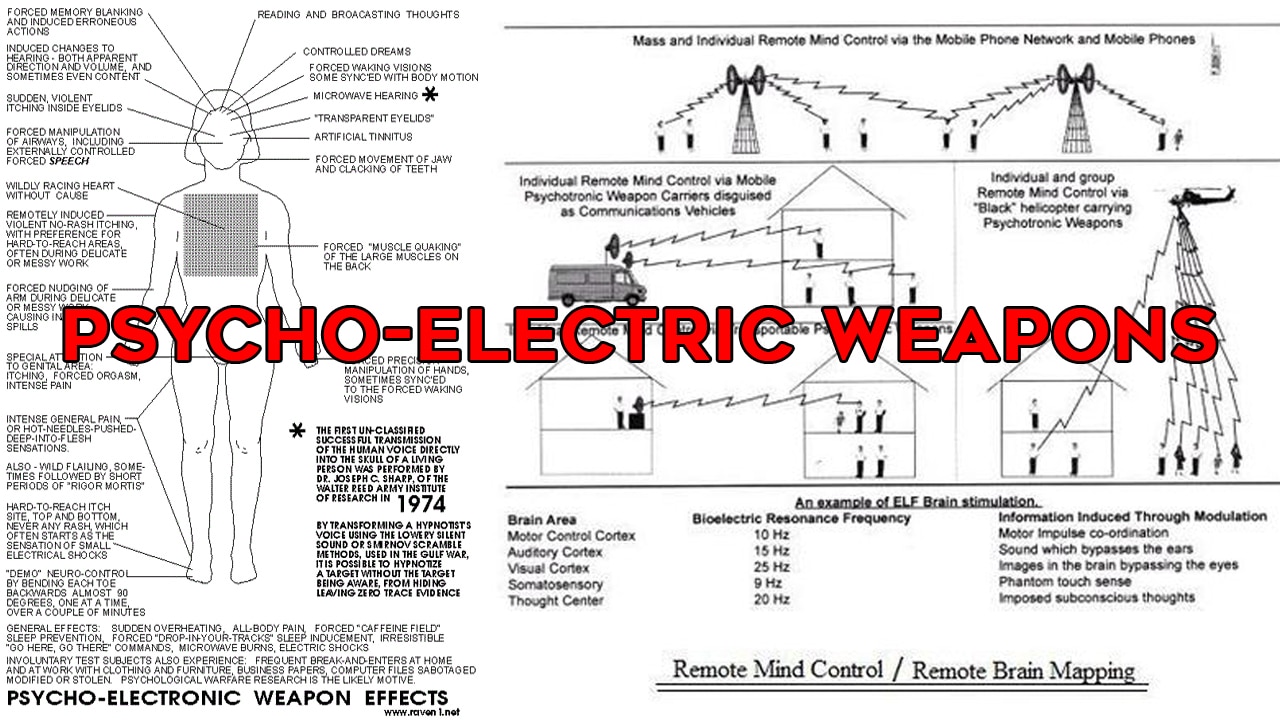
As part of a request for records on Antifa and white supremacist groups, WSFC inadvertently bundles in “EM effects on human body.zip”
When you send thousands of FOIA requests, you are bound to get some very weird responses from time to time. Recently, we here at MuckRock had one of our most bizarre gets yet - Washington State Fusion Center’s accidental release of records on the effects of remote mind control.
As part of my ongoing project looking at fusion centers’ investigations into Antifa and various white supremacist groups, I filed a request with the WSFC. I got back many standard documents in response, including emails, intelligence briefings and bulletins, reposts from other fusion centers - and then there was one file titled “EM effects on human body.zip.”
Hmmm. What could that be? What does EM stand for and what is it doing to the human body? So I opened it up and took a look:

Hell yeah, dude.
EM stands for electromagnetic. What you are looking at here is “psycho-electronic” weapons that purportedly use electromagnetism to do a wide variety of horrible things to people, such as reading or writing your mind, causing intense pain, “rigor mortis,” or most heinous of all, itching.
Now to be clear, the presence of these records (which were not created by the fusion center, and are not government documents) should not be seen as evidence that DHS possesses these devices, or even that such devices actually exist. Which is kind of unfortunate because “microwave hearing” is a pretty cool line of technobabble to say out loud.
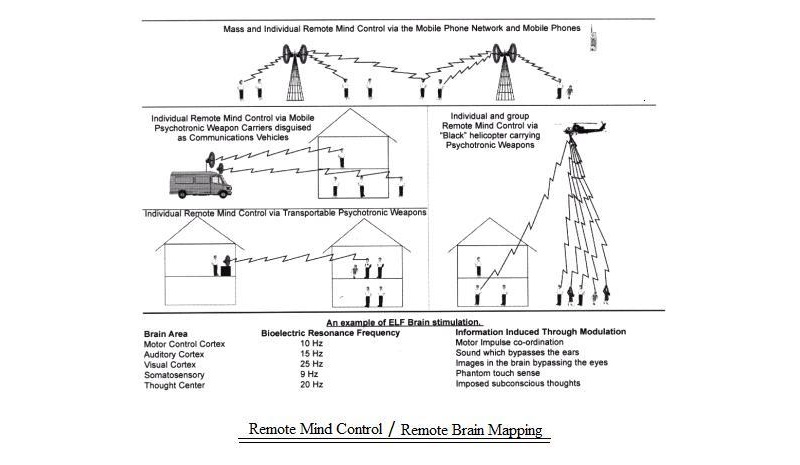
You know what’s even cooler? “Remote Brain Mapping.” It is insanely cool to say. Go ahead. Say it. Remote. Brain. Mapping.
Just check the detail on these slides too. The black helicopter shooting off its psychotronic weapons, mapping your brain, broadcasting your thoughts back to some fusion center. I wish their example of “ELF Brain stimulation” was a little clearer though.
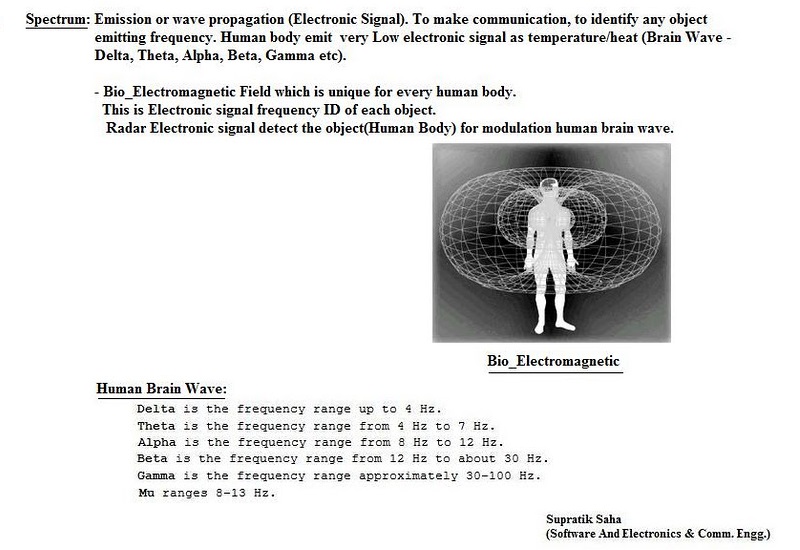
It’s difficult to source exactly where these images come from, but it’s obviously not government material. One seems to come from a person named “Supratik Saha,” who is identified as a software engineer, the brain mapping slide has no sourcing, and the image of the body being assaulted by psychotronic weapons is sourced from raven1.net, who apparently didn’t renew their domain.
It’s entirely unclear how this ended up in this release. It could have been meant for another release, it could have been gathered for an upcoming WSFC report, or it could even be from the personal files of an intelligence officer that somehow got mixed up in the release. A call to the WSFC went unreturned as of press time, so until we hear back, their presence remains a mystery.
We’ll keep you updated once we hear back, and you can download the files yourself on the request page.
Mystery Uranium Cubes in U.S. Labs Likely From Nazi Experiment ( GIZMODO )



Researchers are using a variety of methods to determine the provenance of the radioactive cubes.
A research team based at the Pacific Northwest National Laboratory in Washington is working to certify that mysterious uranium cubes in American laboratories were once part of Nazi Germany’s efforts to build a successful nuclear program. Using nuclear forensics, the team might be getting closer to determining the provenance of the radioactive cubes—as of yet, no one is even sure how most of them got to where they are today.
The team’s research was presented today at a meeting of the American Chemical Society. From 1939 through 1945, the Nazis had their own nuclear program. There were two Nazi research groups—one run by Werner Heisenberg and another led by Kurt Diebner—that designed and built nuclear reactors with the hope of making an atomic bomb. After the war, many of the cubes were shipped to the United States, where they disseminated into universities and private ownership, through formal and informal channels.
The cubes generally lack a solid provenance history—that is, people didn’t really keep track of every hand they passed through and when. The current team suspects that there were once between 1,000 and 1,200 of the cubes in the Nazi reactors, but roughly 12 are known today; now, the team wants to figure out the origin of a cube in Washington State, as well as a few others.
“We don’t know for a fact that the cubes are from the German program, so first we want to establish that. Then we want to compare the different cubes to see if we can classify them according to the particular research group that created them,” said Jon Schwantes, the project’s principal investigator, in an American Chemical Society release.
The German scientists’ work was focused on nuclear fission, the process by which a heavy nucleus is destabilized by a bombardment of neutrons, forcing the nucleus to decay along with a release of energy. Heisenberg’s group hoped that they could incite a bunch of uranium submerged in heavy water to create plutonium for use in an atom bomb. The Nazi reactor cubes, which were about 2 inches on each side, were hung from cables in a three-dimensional lattice under the water; fortunately, the design failed.
And then they ran out of time. In 1945, British and American forces confiscated some of the uranium cubes involved in the German experiments and shipped over 600 of them to the United States. Some of the uranium has since vanished. Others, like the one in Washington, have dubious provenance. The one at the University of Maryland came with an intriguing note, as reported in 2019 by collaborators on the current project. The note simply stated “Taken from the reactor that Hitler tried to build. Gift of Ninninger.” Nininger (his name misspelled in the note) was an interim manager of a Manhattan Project site in Murray Hill, Manhattan, and he gave a cube he likely acquired on the job to a friend, who gave it to another friend, who gifted it to current project collaborator Timothy Koeth for his birthday.

The research team is using radiochronometry, which measures radioactive materials and the stuff they decay into, to determine the age of three cubes. Since the uranium cubes have been decaying since they were cast, they now contain amounts of thorium and protactinium.
Brittany Robertson, a chemist at the Pacific Northwest National Laboratory and a collaborator on the recent research, is applying a radiochronometric method that will be able to identify each element in a cube and its relative concentration, which may tell researchers when the cube was made. On top of that, impurities in the cube might give up traces of other rare-earth elements, which may indicate where the original uranium was mined.
“Our first objective will simply be to confirm the pedigree of the three cubes we are measuring, where the expected age of that material should come out to be the early- to mid-1940s,” Schwantes told Gizmodo in an email. “If our age dating method is extremely precise, it might also be possible to determine if these cubes originated from Heisenberg’s program or Diebner’s program, since their fabrication dates were slightly different (by about 1 year).”
Radiochronometry works on short timelines, which allows the researchers to understand what the cubes were like in the 1940s. They are not certain whether some of the cubes belonged to Heisenberg’s lab or Diebner’s (or neither, though that seems unlikely). While tracking the cube’s origin down to its lab is a “stretch goal,” Schwantes said, the team should be able to at least confirm that the cubes are of Nazi origin—something they assume to be true but until now lacked the means to verify.
Isaac Schultz